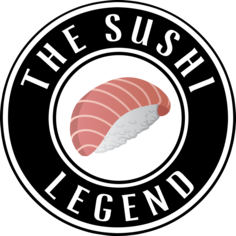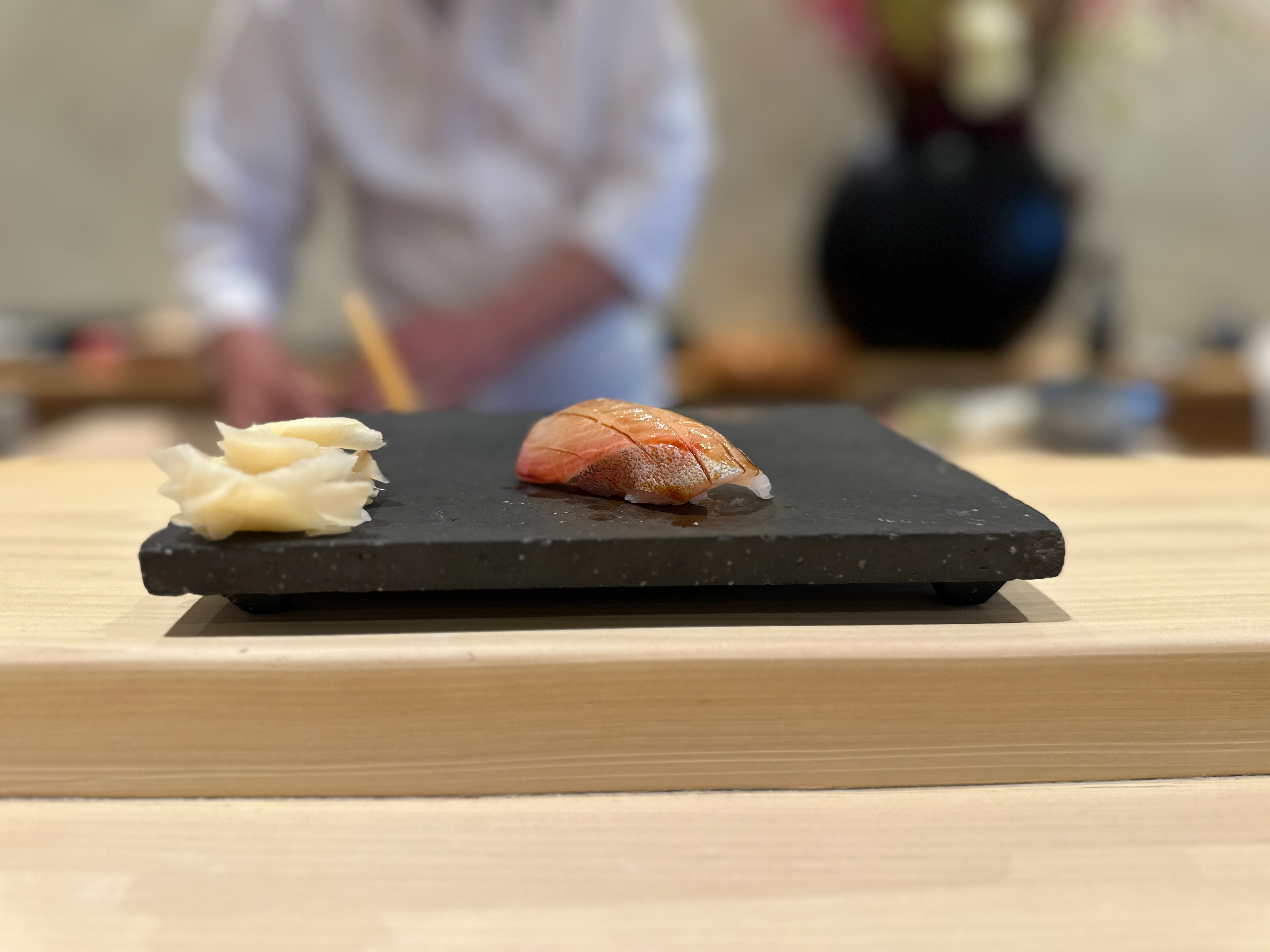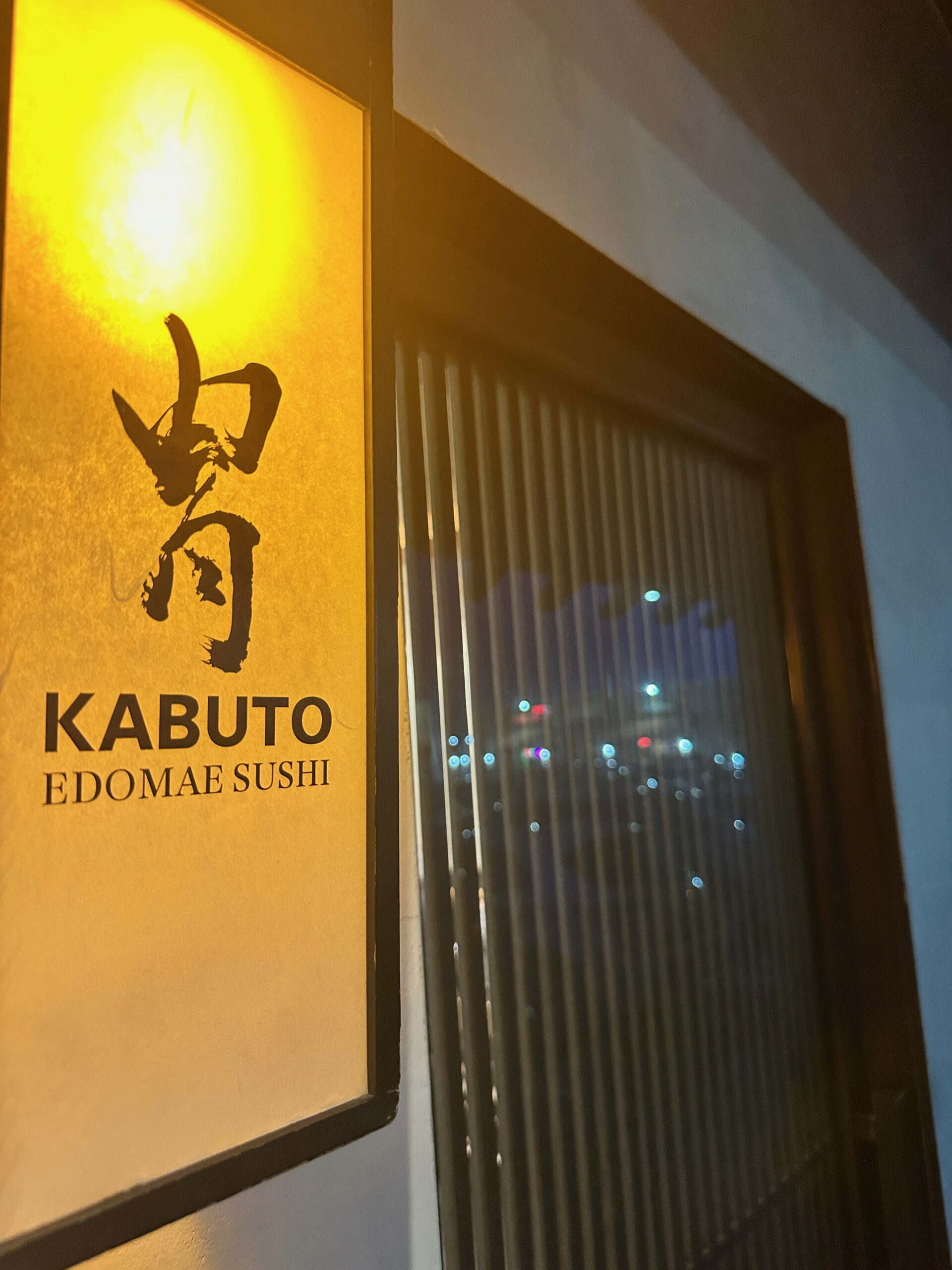
Kabuto
I would appreciate some credit and/or a standing ovation (yes, right now)
Making it to Kabuto Edomae in fabulous, infamous and platitudinous (real word, look it up) Las Vegas, Nevada, was not an easy process.
I was in a remote part of Florida. I drove three hours to Miami, passing every Jeep Wrangler ever made. Slept overnight, woke up at 4am, returned the car and got to the Centurion Lounge – with 14,000 other people – by 6:45. You may say that’s early for a 9:30 flight, but you also aren’t an airport alcoholic. I fly about 10 times per year (not to brag), but if I’m not 5 chardonnays deep by boarding, we’re going to have issues. The good news is that if perfectly scanning your boarding pass at the gate while buckled was an olympic event, I would be Ryan Lochte.
Flight time to Vegas is like 6 hours, so I’m trying and very much failing to outdrink my hangover. I arrive at the Fountainebleau – great hotel by the way, but nowhere near anything of substance – and grabbed sushi at Bar Ito in the hotel. Perhaps the worst sushi experience I’ve had this decade (review to come). I worked out, because the hotel gym closes at 7pm, an insane policy. And then I went to dinner. Full, hungover, and miserable.
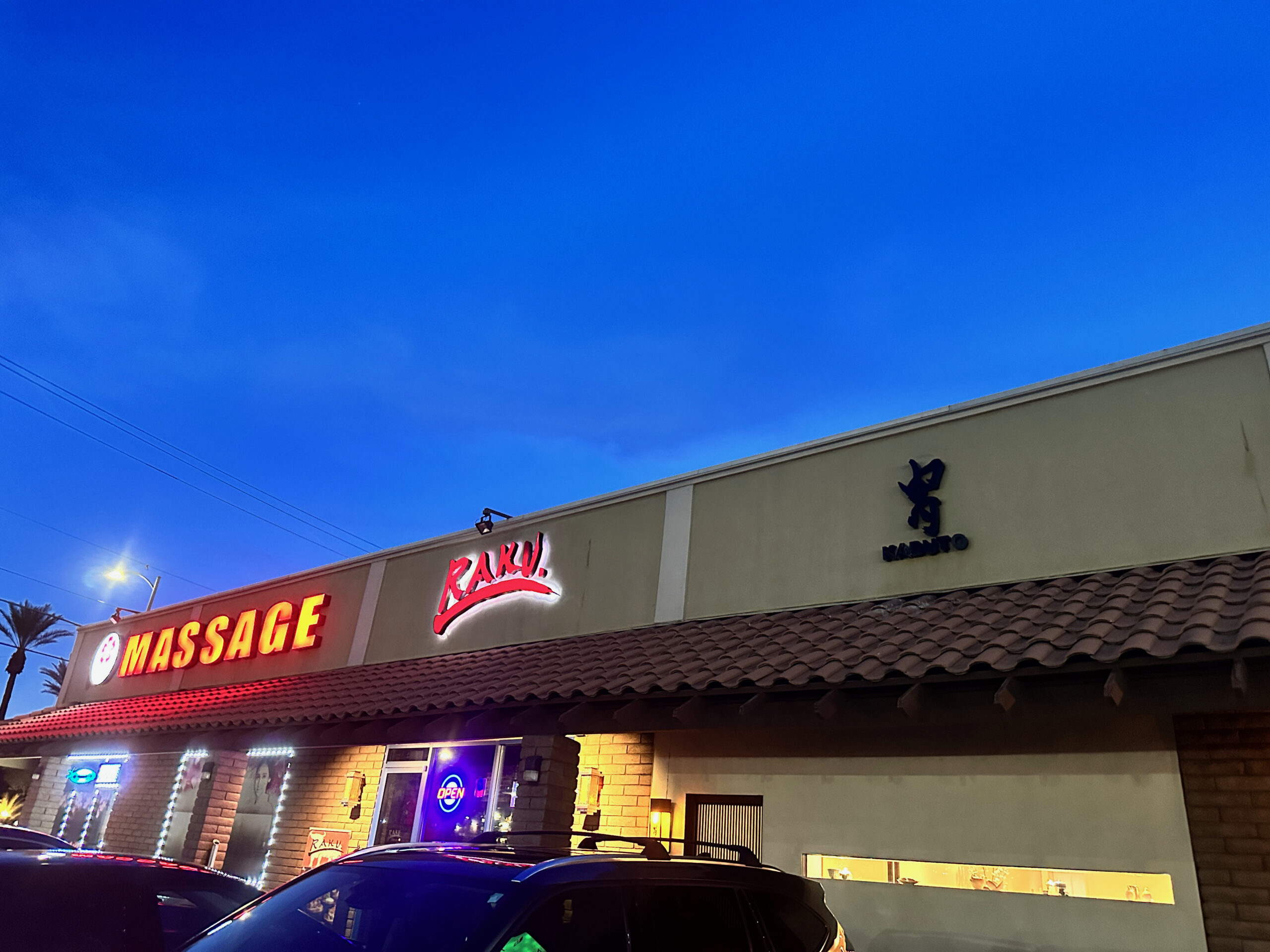
Kabuto is on the right
What’s the point of all this?
- I enjoy writing about myself (third child syndrome)
- No one would blame me if I hit the bed and that was that, but this was my last chance to visit Kabuto. My friends were joining me the next day, and to call their palettes unrefined would be an understatement. Three of them got Popeyes for dinner one night. These people have good jobs and eat like they’re on third period spare in high school.
So I went. That’s why you read The Sushi Legend. For effort like that. For stories like this. And to the poor souls at Kabuto reading this blog for the first time and wondering where on earth is the sushi talk, I’m sorry.
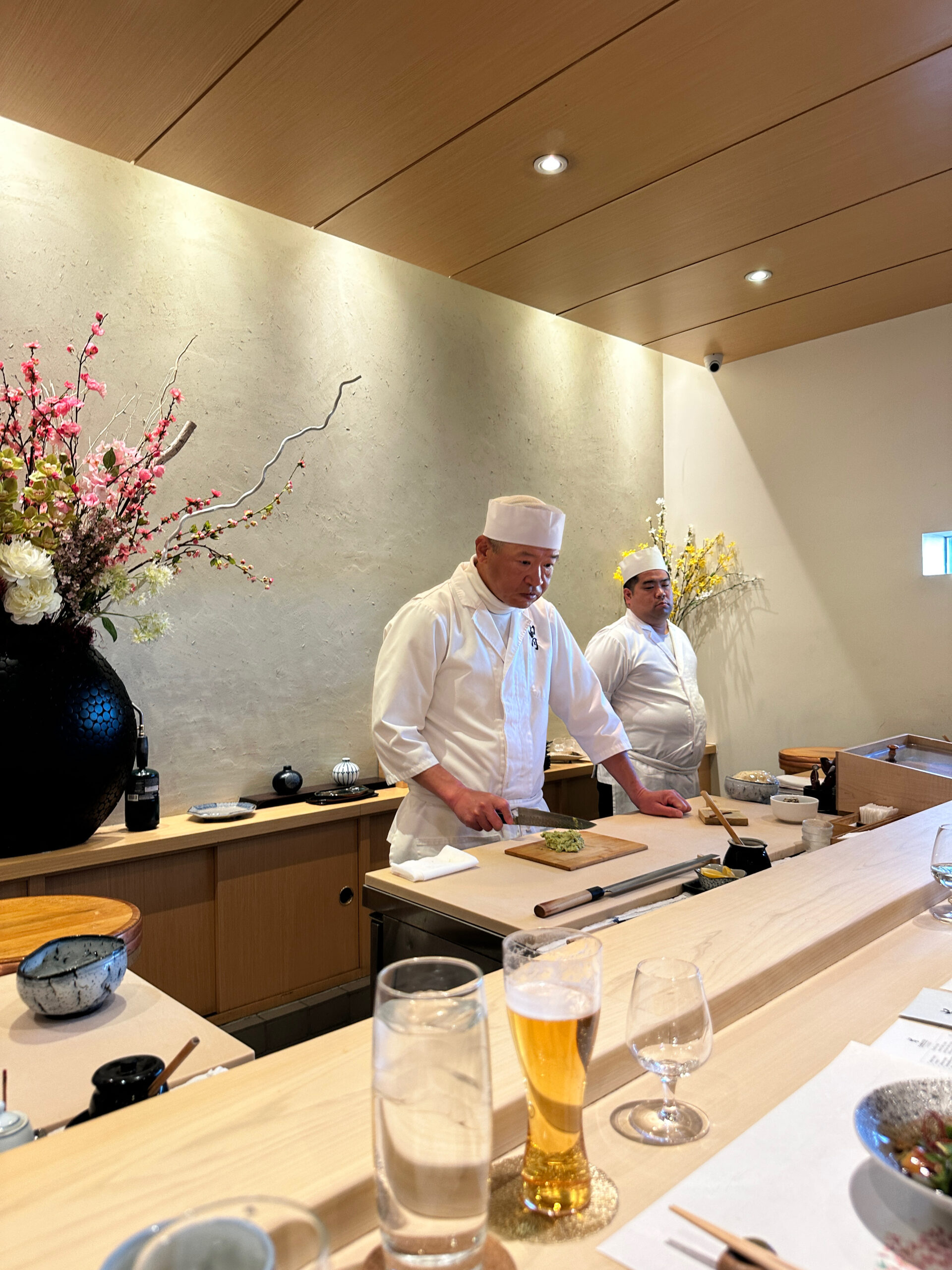
Inside Kabuto
Alright onto the meal.
Kabuto has two Omakase options and an a la carte menu that – let’s just call it Okonomi – that comes at the end.
The cheapest, at $125, features 12 nigiri and two appetizers. The more expensive version, at $175, features better nigiri and three appetizers.
I chose the $175, mostly because Kabuto calls you the day before to ask your selection and I panicked. I understand why restaurants do this. Cost certainty. Makes ingredient shopping easier.
But I hate it. On Tuesday at 4:00pm, I had no clue how I would feel on Wednesday at 7:30. Turns out the answer was “wildly hungover”.
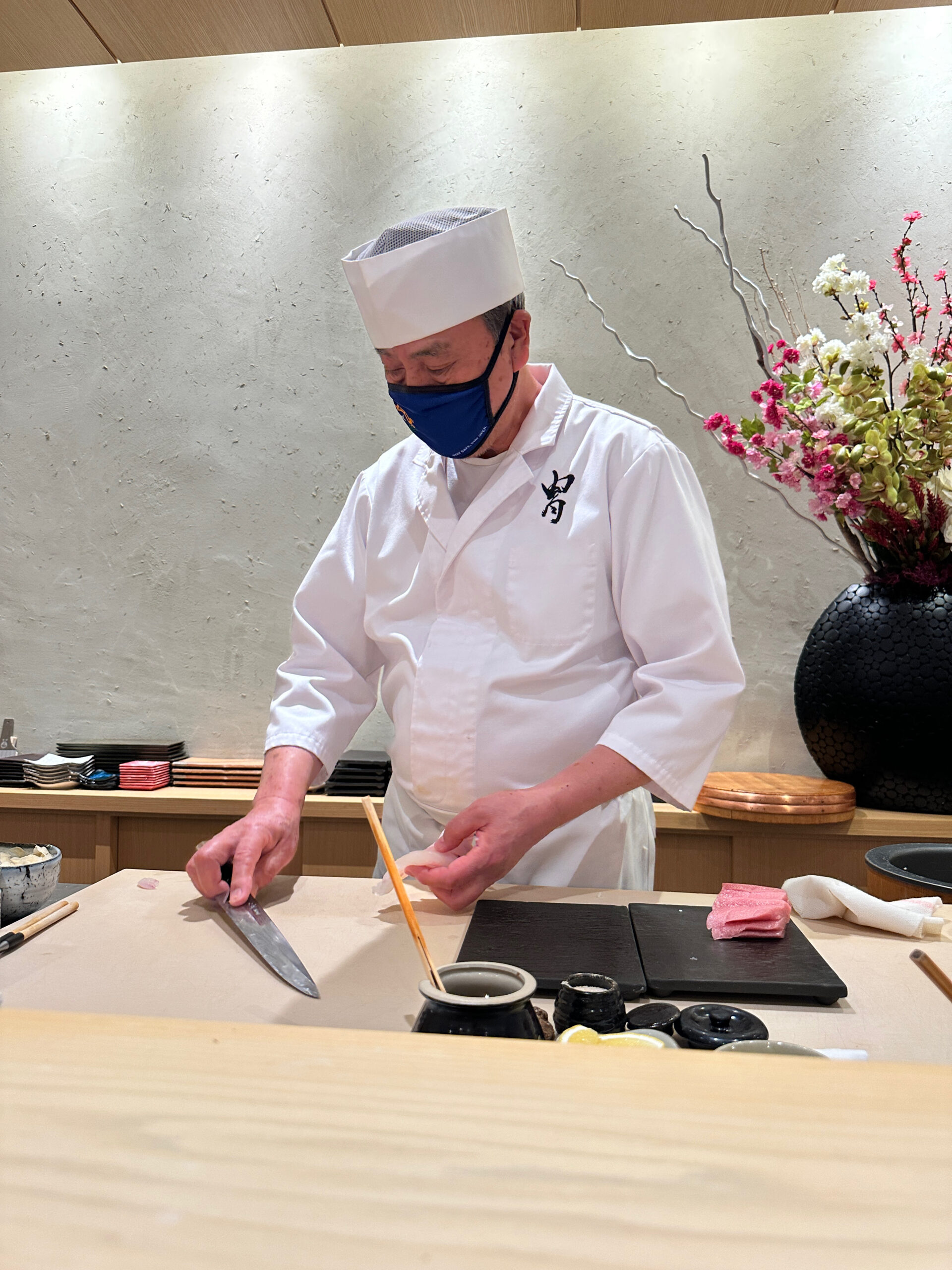
Kabuto features a rotating cast of sushi legends
Don’t expect a singular celebrity Itamae
Kabuto has five rotating chefs for three spots each night. I love this. It reminds me of some of the sushiya I love in Los Angeles, where customers can connect with their own ‘chef’. No pressure to sit in the catbird seat.
It’s been open since 2012, but pinpointing Kabuto’s age is difficult. It’s run like a generational joint, but interiors are modern. It could be anywhere from 20 to 60 years old, sort of like Tom Hardy in Mobland.
Kabuto is fantastic; the appetizers were less than
The first course is a collection of seasonal Japanese appetizers, often referred to as Zensai.
Worth highlighting the Kinugoshi-dofu (silken tofu). The topped Tsubugai (whelk) was delicious, but limited (as it usually is). The consistency on the tofu itself was great, but lacking the flavour I usually enjoy. I’d say it needed a touch more soy sauce, but I’m a simple sushi blogger, not an expert.
The roe on top was referred to as “sturgeon caviar”, which gives me a chance to remind everyone of something very important (to me, and maybe only me):
Caviar is sturgeon roe. If the roe is not from the sturgeon, it is not caviar. There is no such thing as salmon caviar, or trout caviar, or anything else, no matter what the Oxford Dictionary now claims. I’m this close to a Ted Talk. For now, I’ll settle at “passive aggressive posts on my Instagram“.
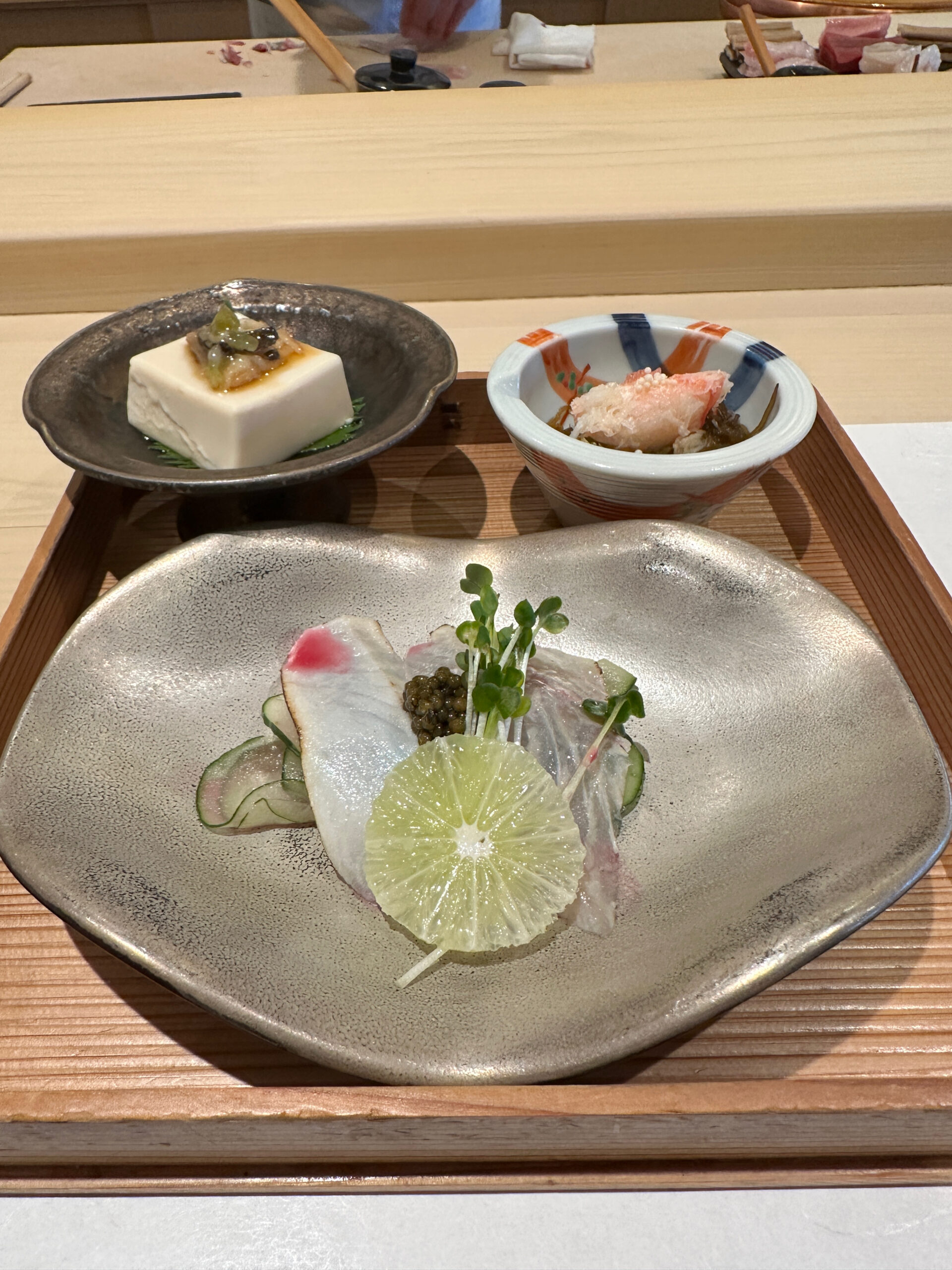
1: Zensai (seasonal appetizer). Kinugoshi Tofu (silken tofu) with Tsubugai. Hirame with “sturgeon caviar”. Zuwaigani (snow crab). Some lime that belonged elsewhere.
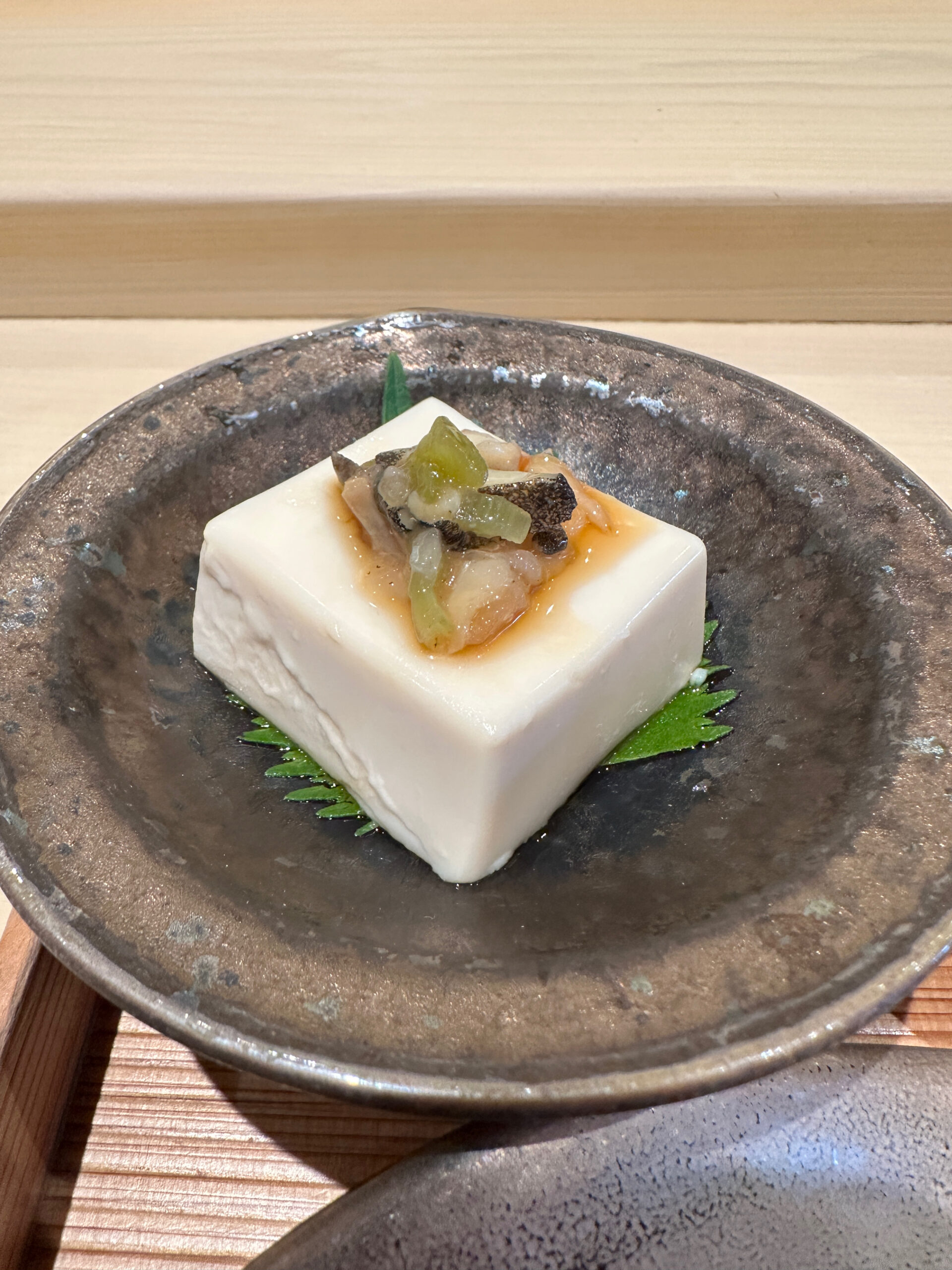
Another image of the Kinugoshi-dofu
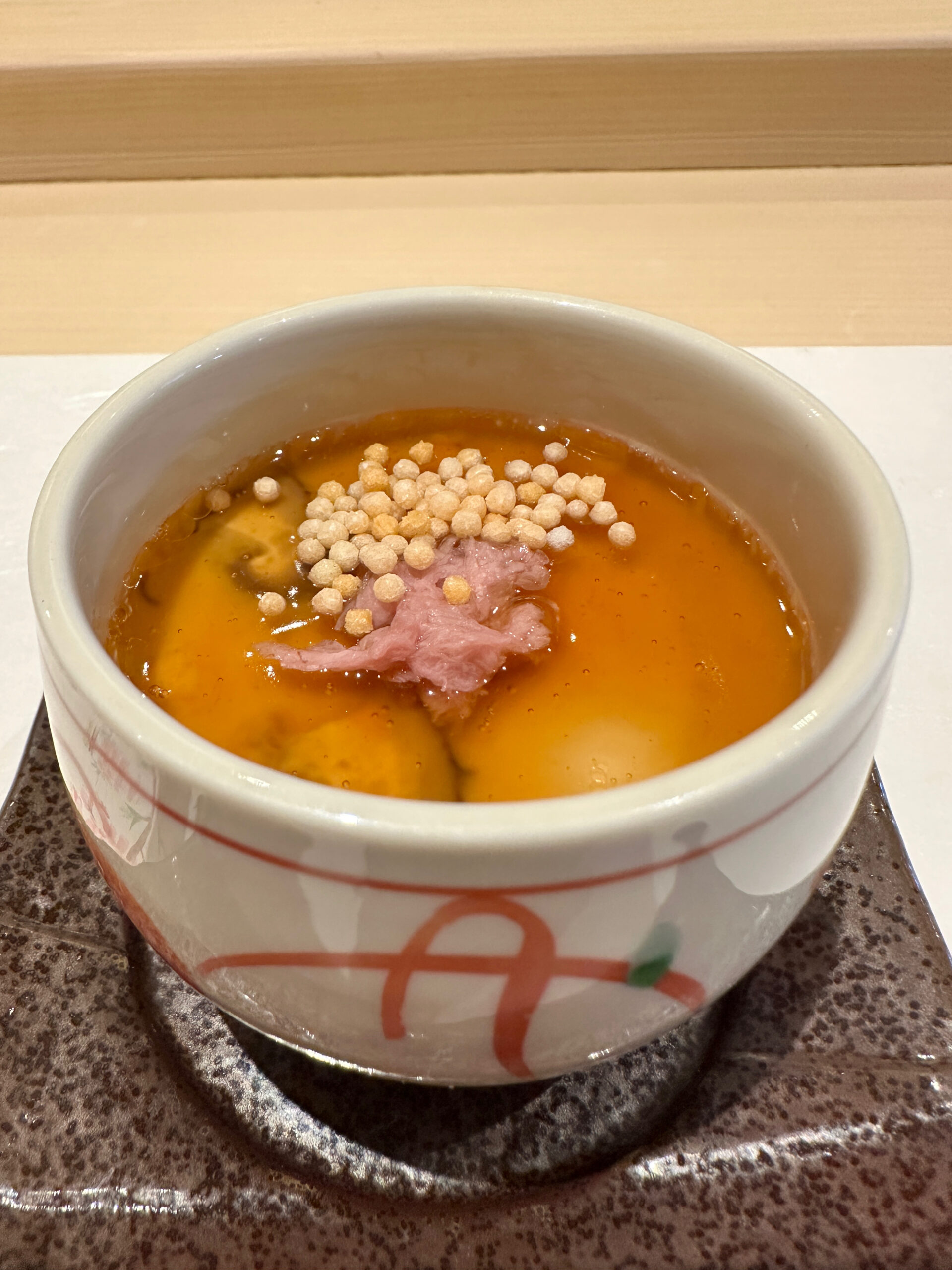
2: Chawanmushi with “blue shrimp” and salmon. Ankake (savory dashi sauce) gives it the colour.
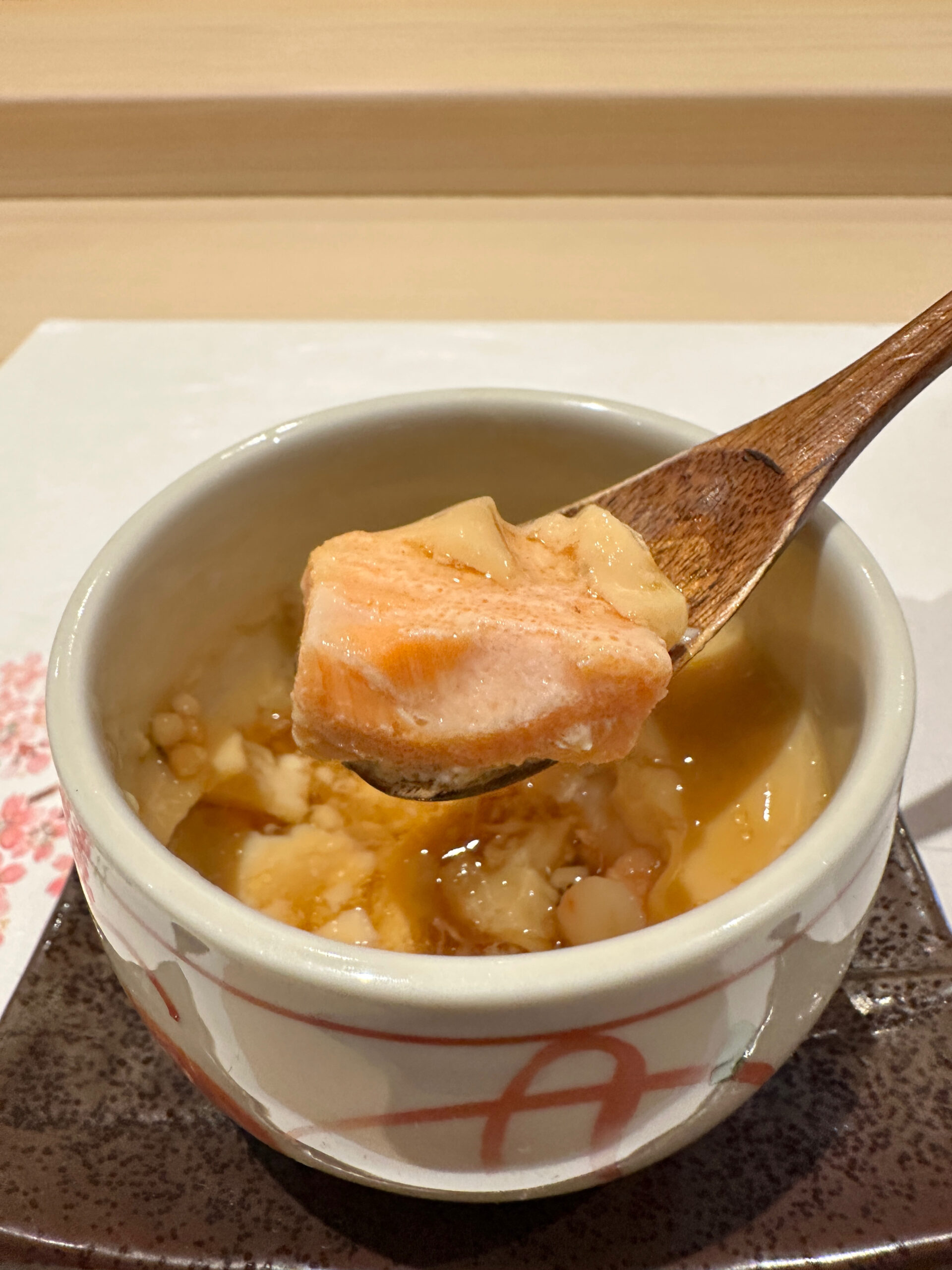
Another image of the chawanmushi
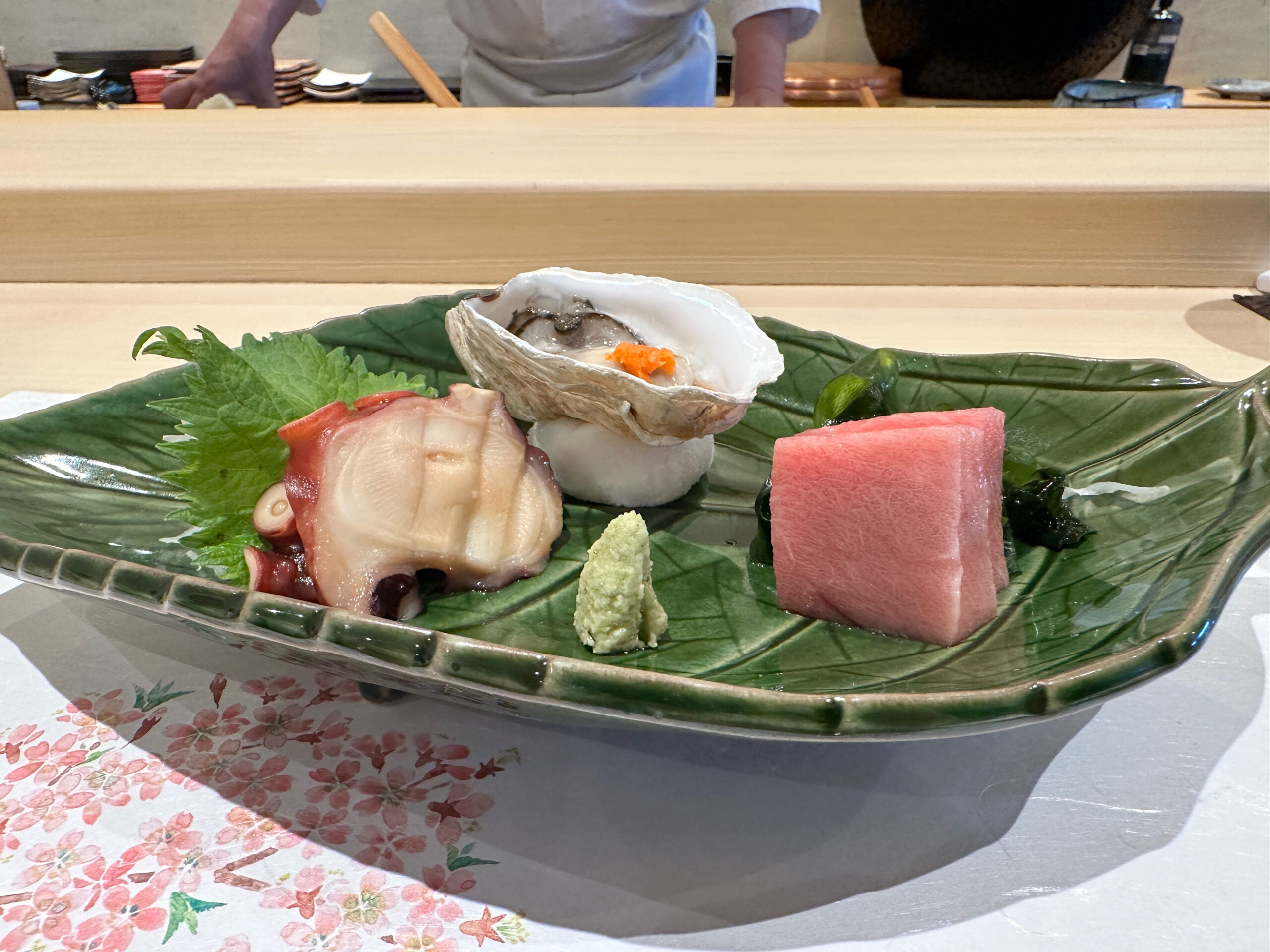
3: Sashimi course (Chu Toro). Oyster with Yuzu Kosho. Madako (Octopus).
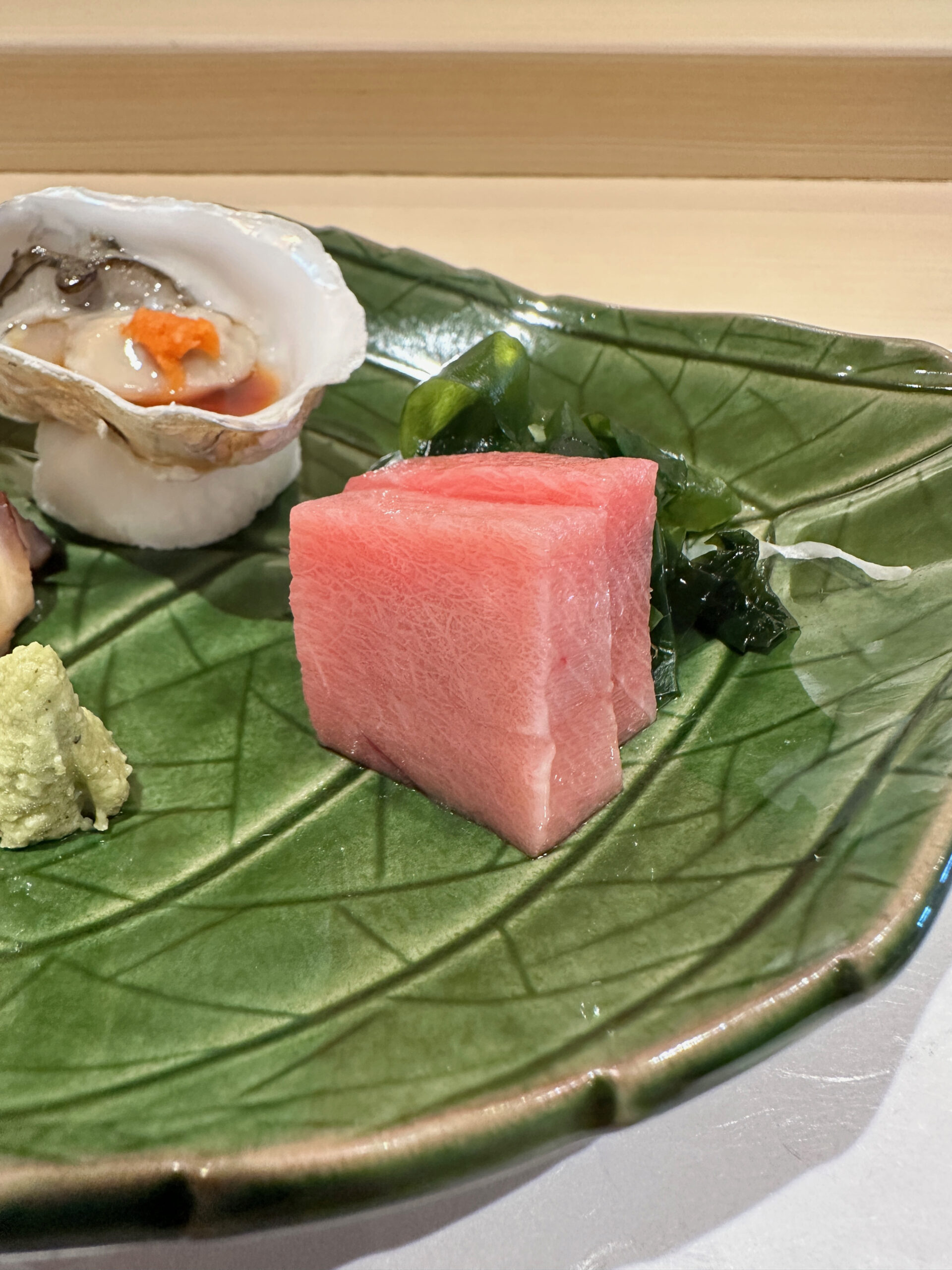
Chu Toro was far too cold.
The fourth course was presented as “Ainame, Japanese Sea Bass”.
That caused an issue for me as a nutcase. You see, Ainame in english is Fat Greenling, not Sea Bass. Sea bass is Suzuki, or a few other names if it’s a different age, but not Ainame.
This was a take on the Miso Black Cod dish that has swept Japanese American menus for decades. It was the extra appetizer for the premium menu, and while good, certainly not worth the splurge.

4: Ainame (Fat Greenling) – or was it sea bass?
But finally we get to the good stuff – the nigiri
Though we started with very familiar Kinmedai (goldeneye snapper), a staple of American sushiya, the meal really kicks off with the Botan Ebi that followed.
I prize Botan Ebi for two things: the sweetness of the meat, and tempura-battered head that traditional sushiya often serve alongside.
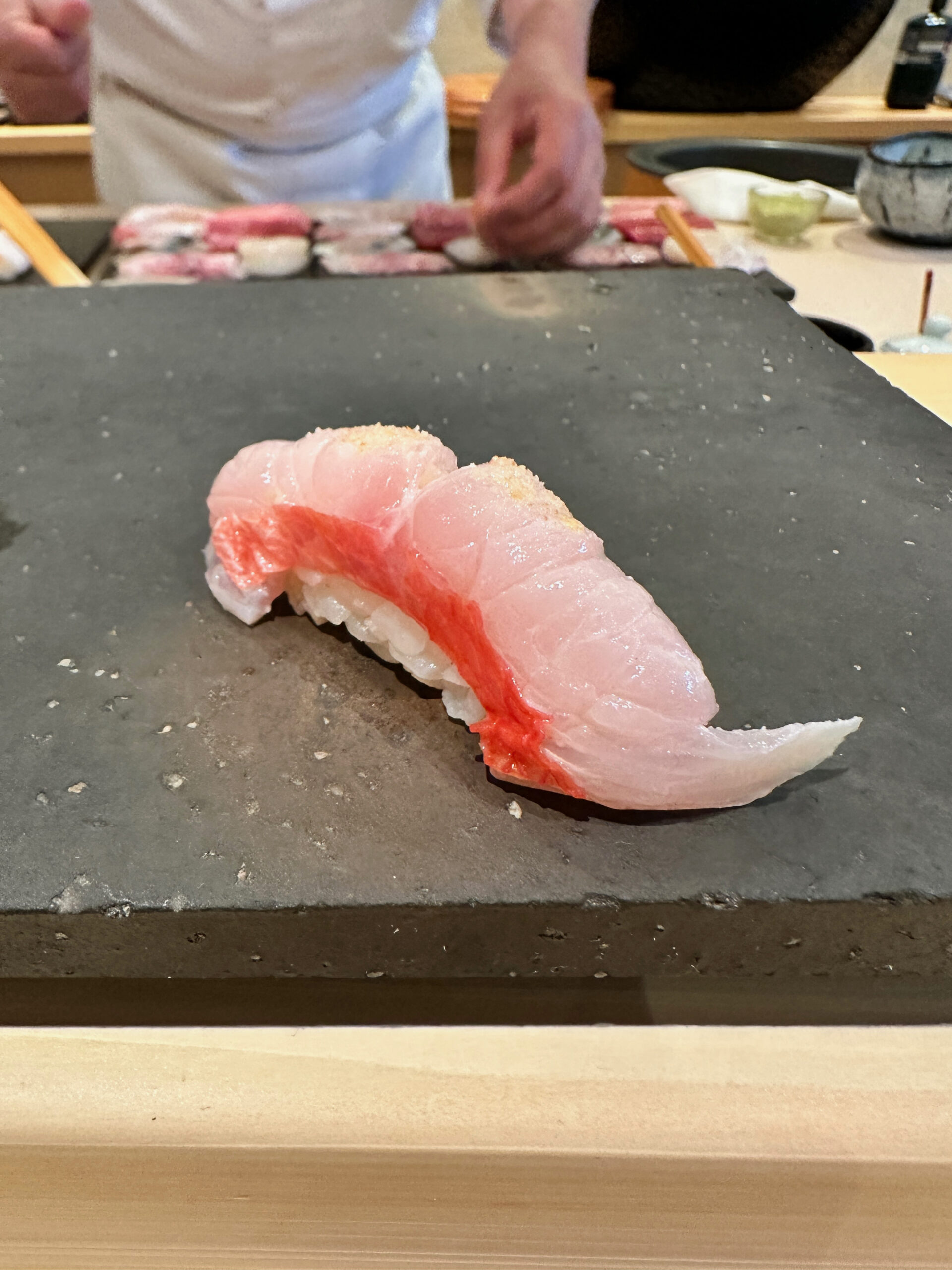
5: Kinmedai (goldeneye snapper)

6: Botan Ebi
Perhaps – PERHAPS – the neta that exemplifies what makes an omakase at Kabuto special comes in the hole (that’s what we baseball nerds call the three slot).
Isaki doesn’t have the most appealing english name. Chicken Grunt. Two minutes of research tells me that it’s so-named for a dorsal fin that looks like a chicken. Ok then.
This isn’t just one of the fattier shiromi (white fleshed fish), a seasonal specialty that signifies the start of summer. It’s a striking piece of sushi. Look at this baby:
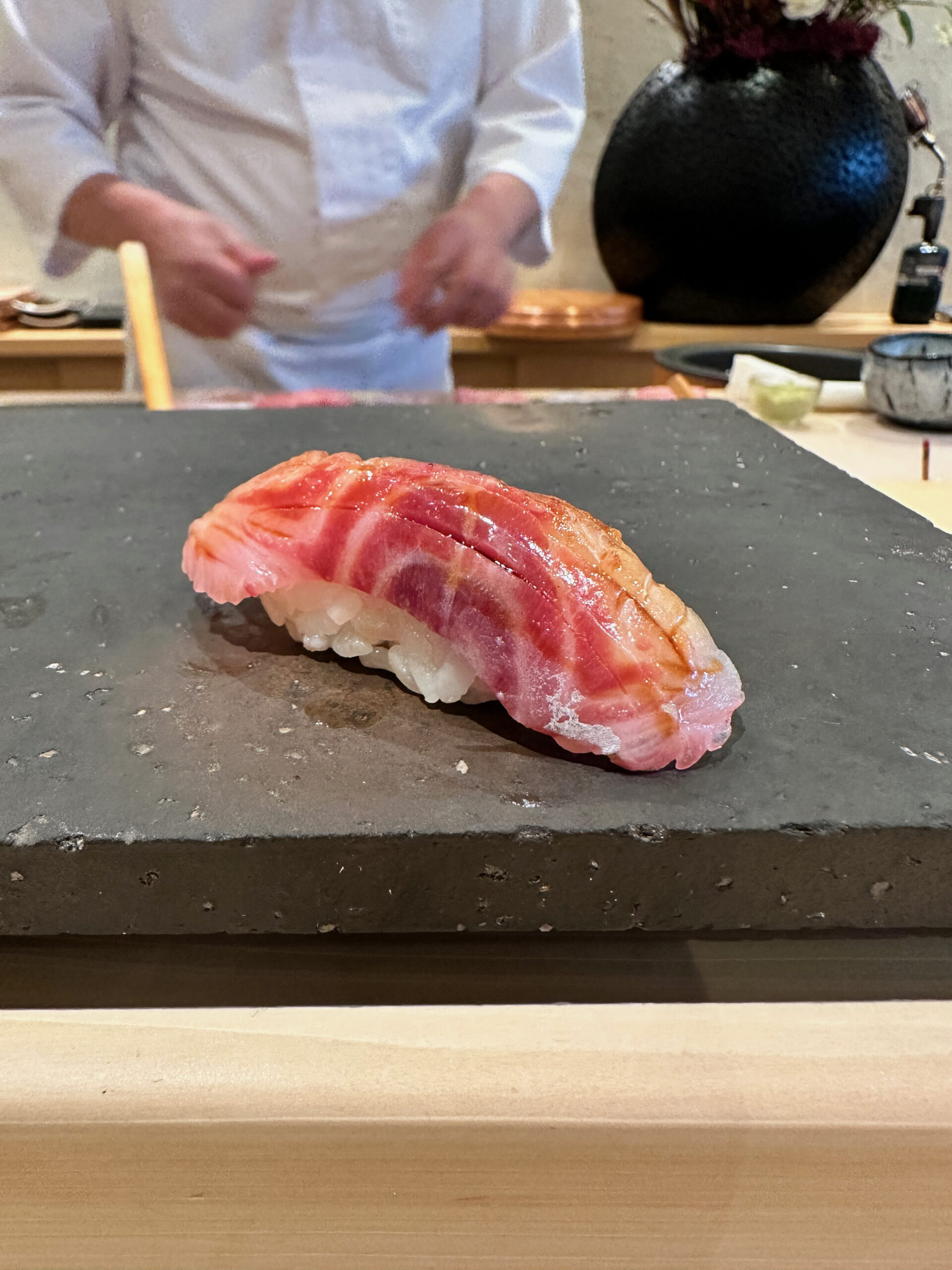
7: Isaki (chicken grunt)
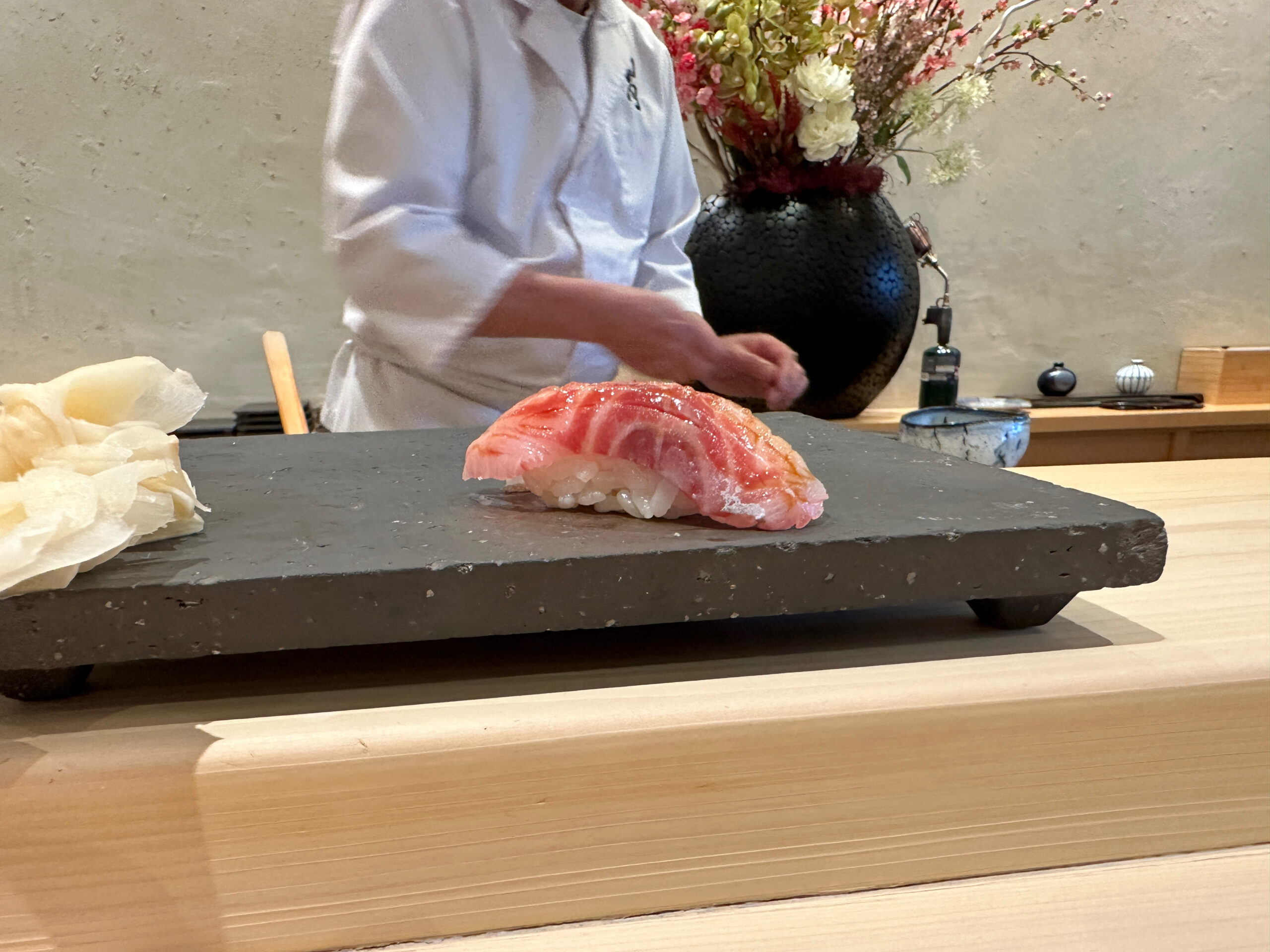
Another angle
It’s often said – by who, I have no clue – that there are a few key signs to the quality of a sushiya. Hikarimono, silverskinned fish, is one. Another is how the sushiya treats honmaguro, the bluefin tuna, queen of Edomae sushi.
Kabuto shines there as well.
Below is the Akami, the lean part of the maguro, near the back. If you’ve had tuna at any standard sushiya, odds are that this is the cut they’ll serve. Unlike the fattier cuts near the belly, Akami takes particular skill and sourcing to bring out its flavor. The incisions help cradle the nikiri, and happen to look pretty nice as well.
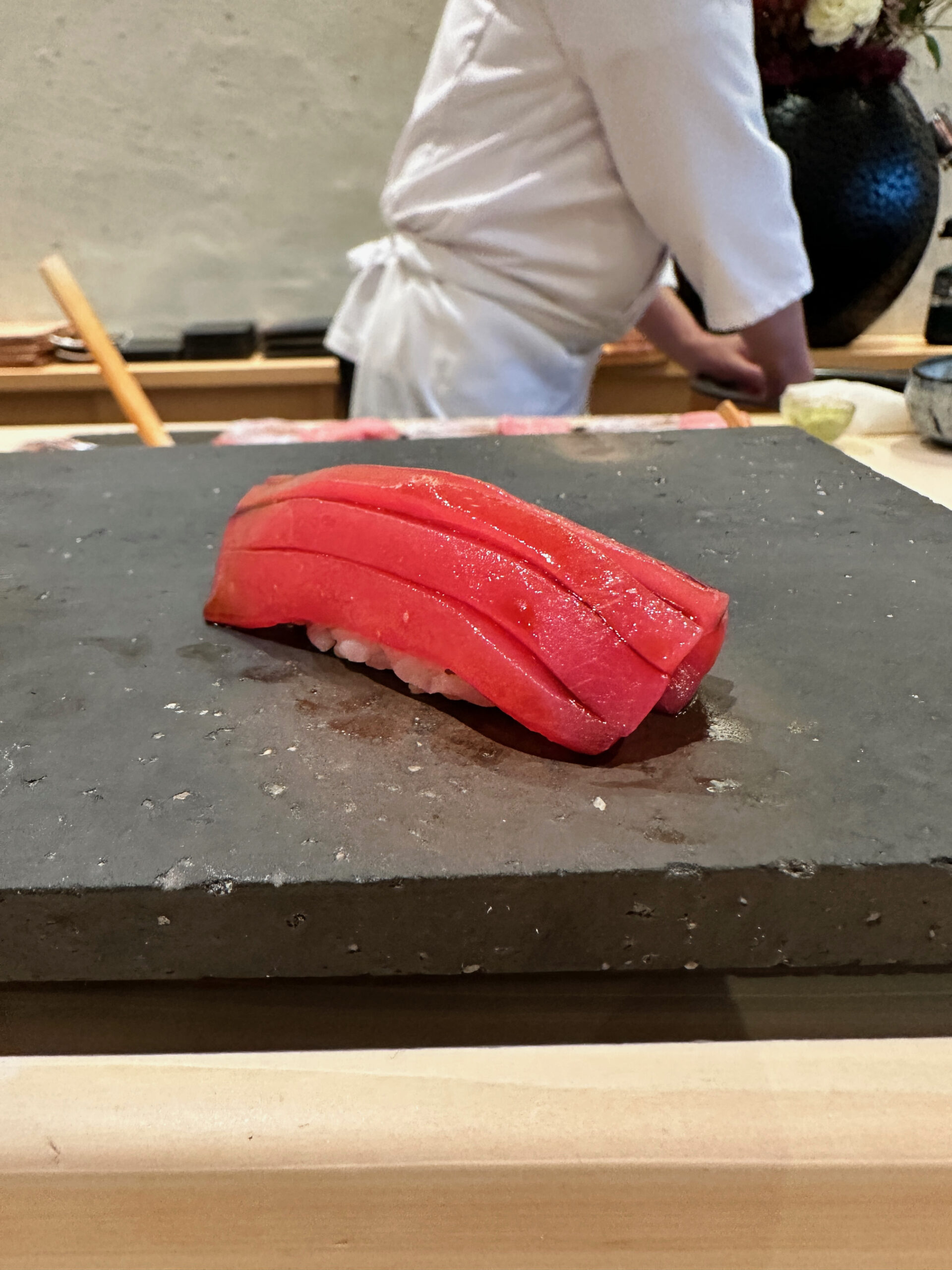
8: Akami (lean tuna)
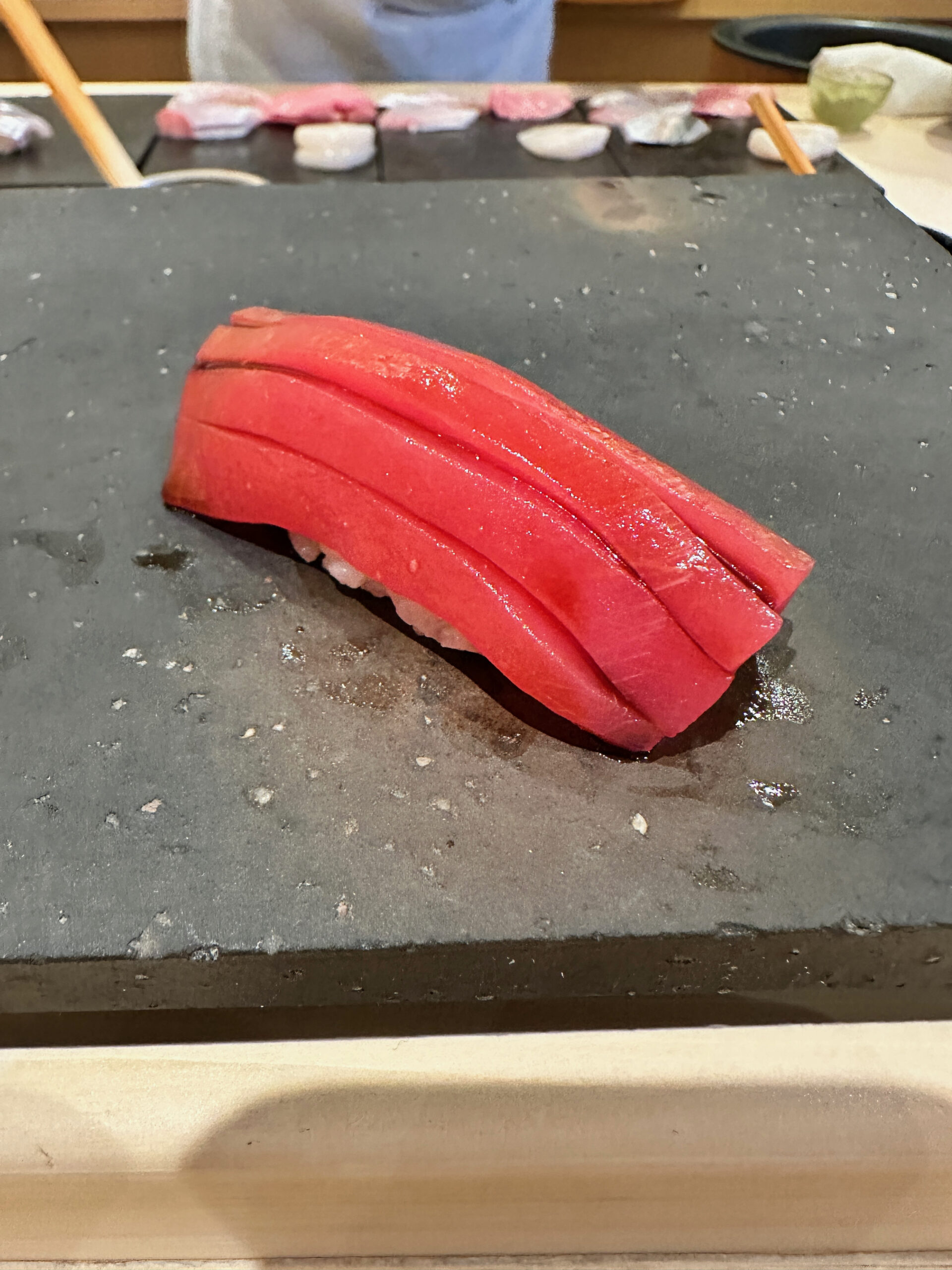
8: Akami (lean tuna)

9: Ma Aji (horse mackerel)
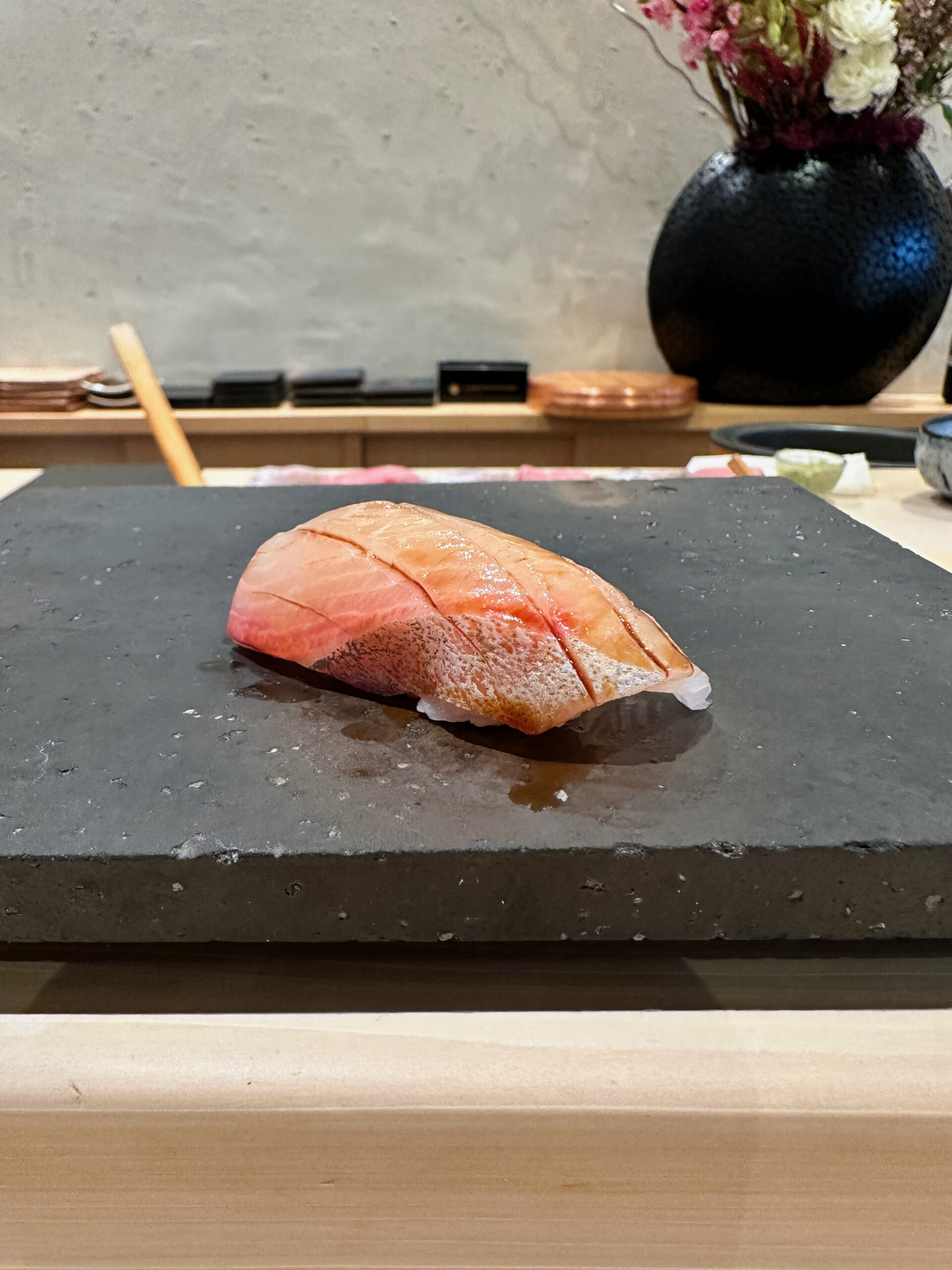
10: Kanpachi
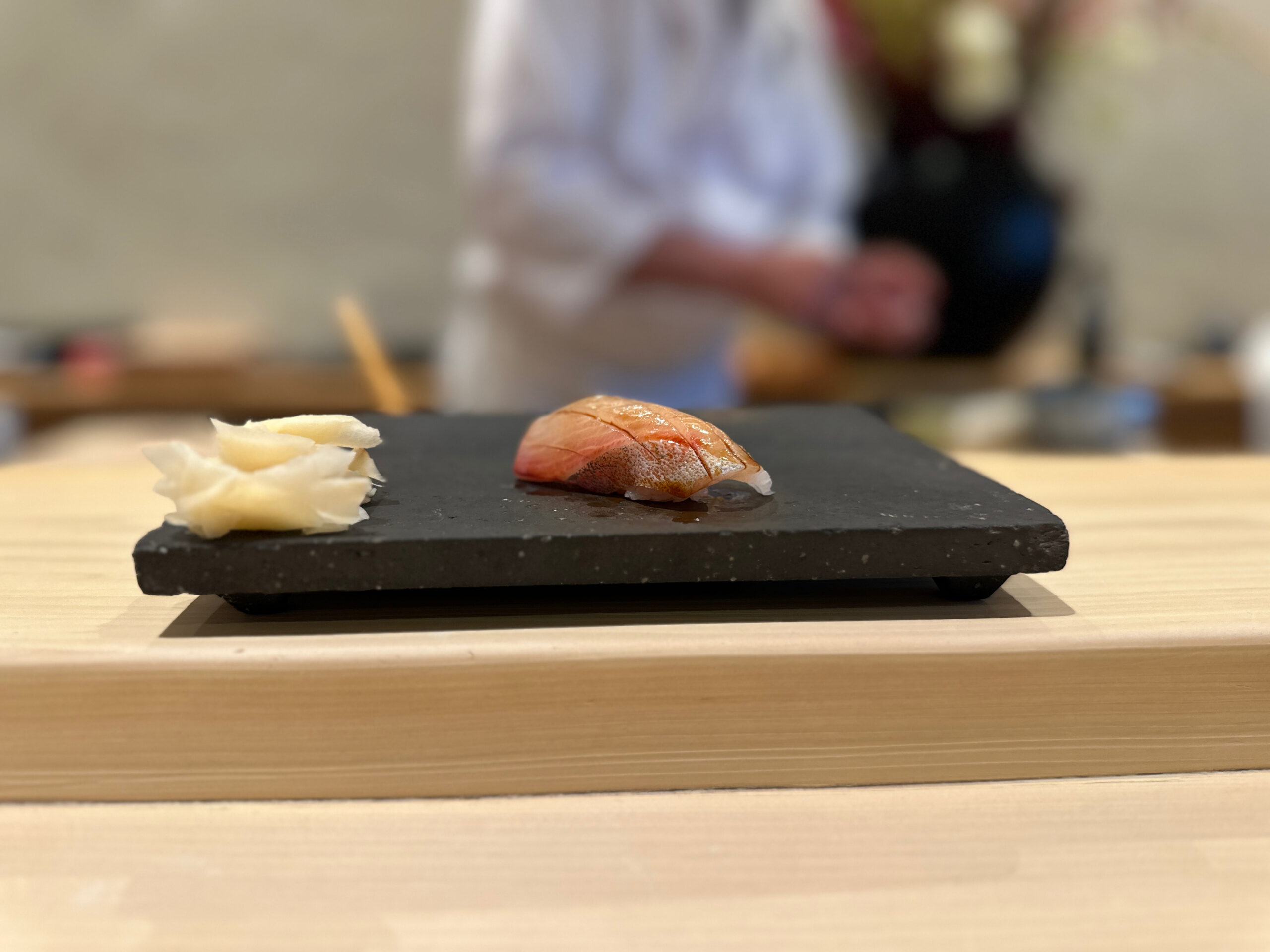
Another angle
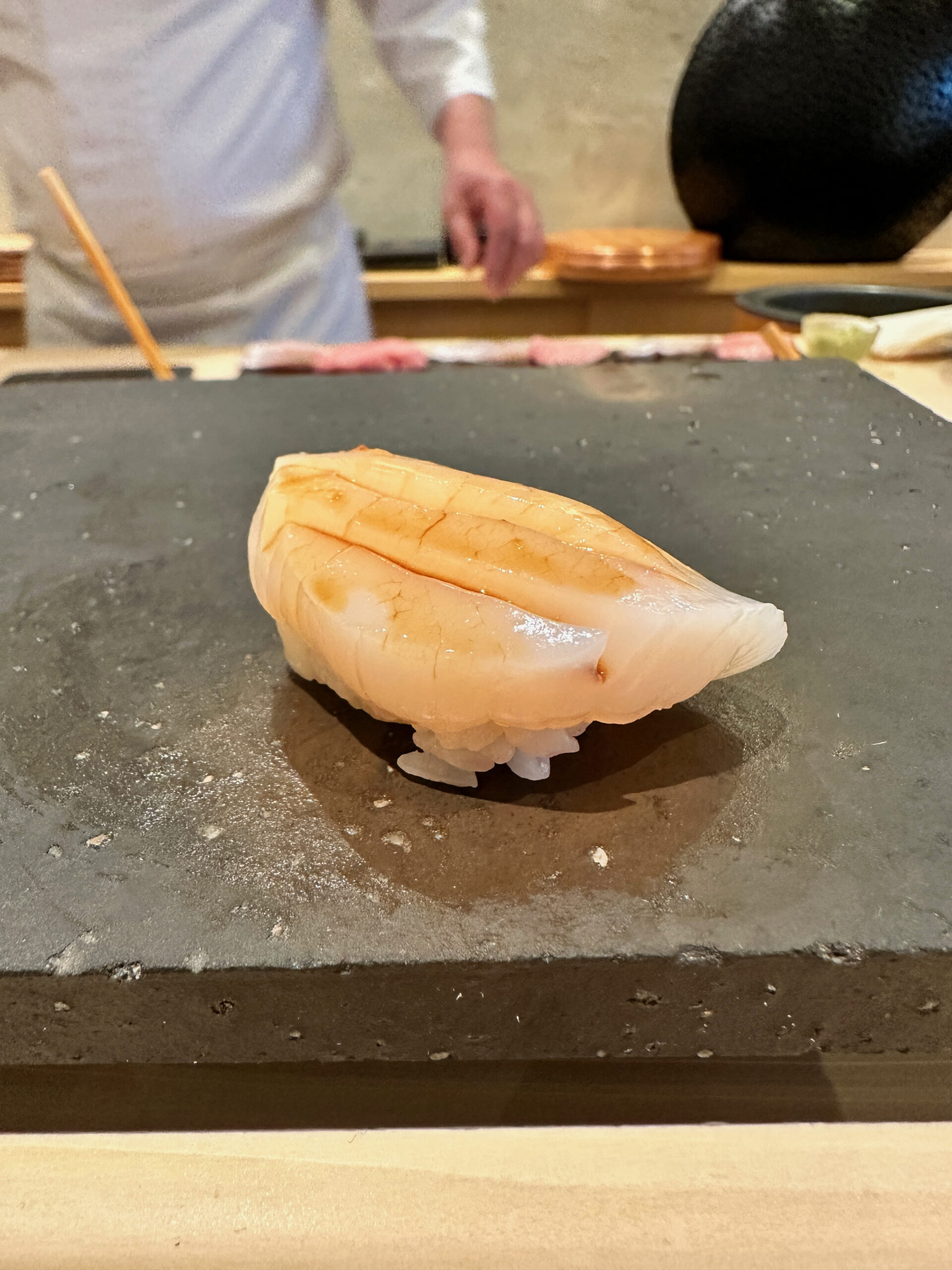
11: Hotategai
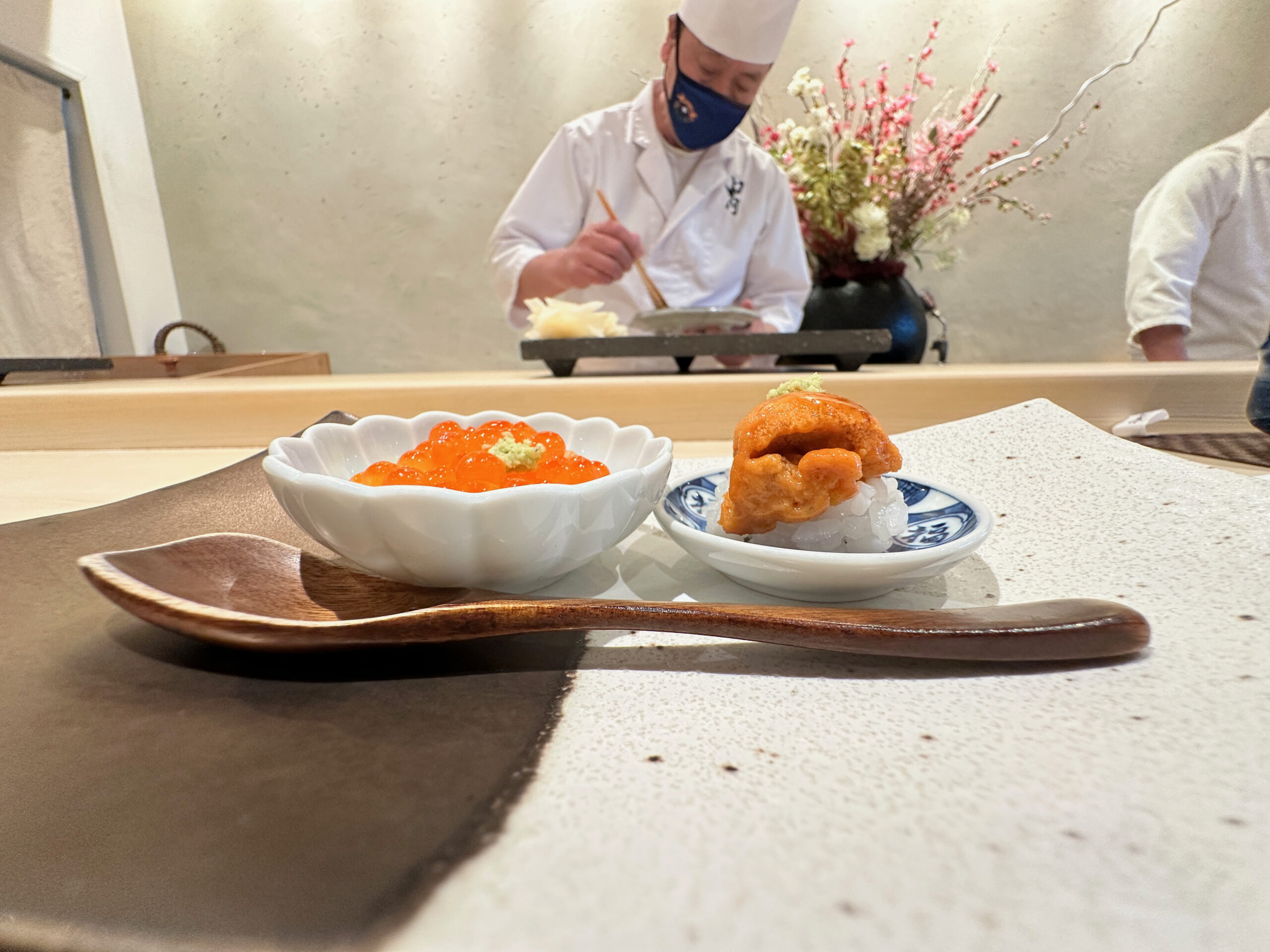
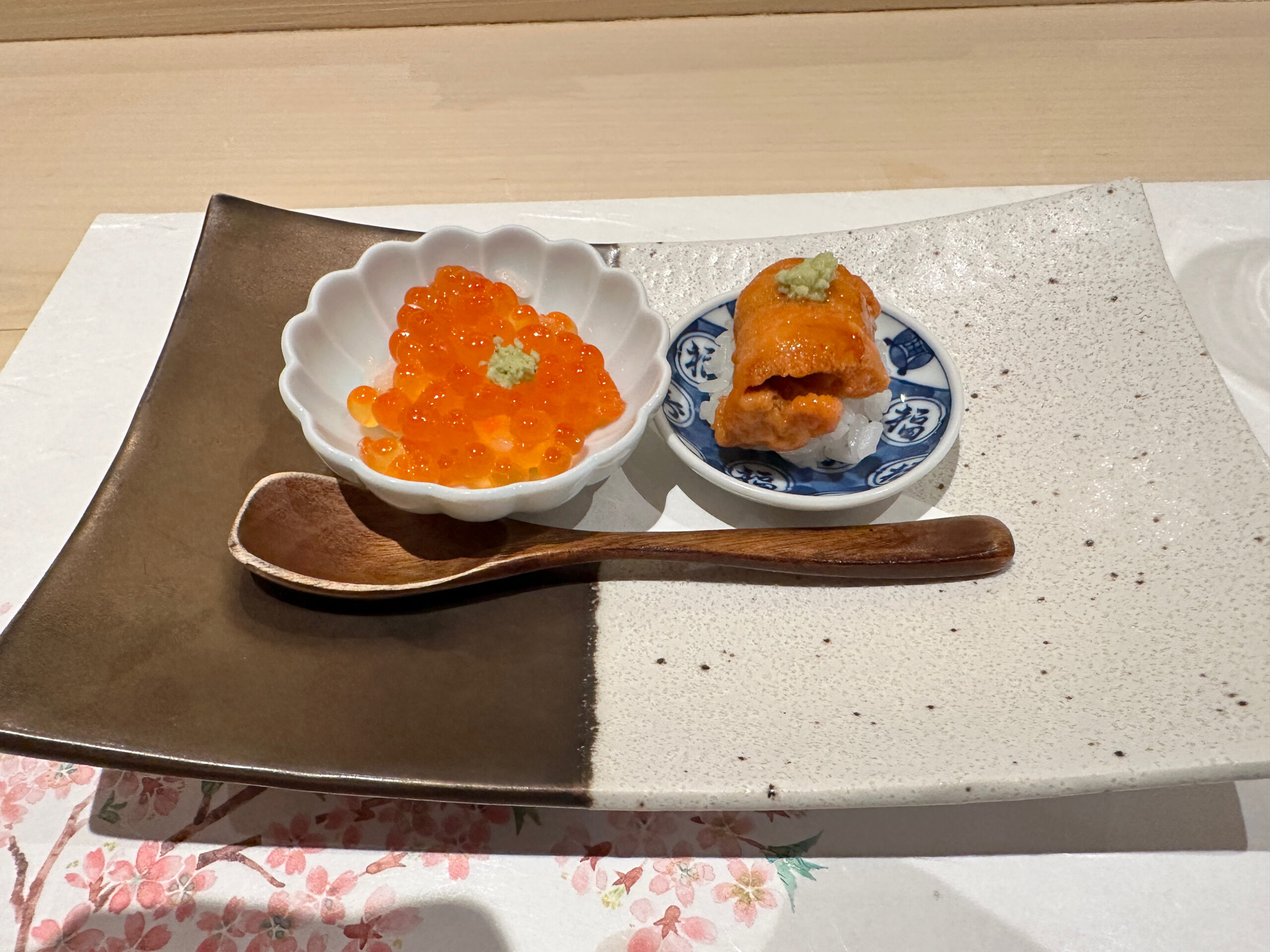
12: Ikura and Ezo Bafun Uni
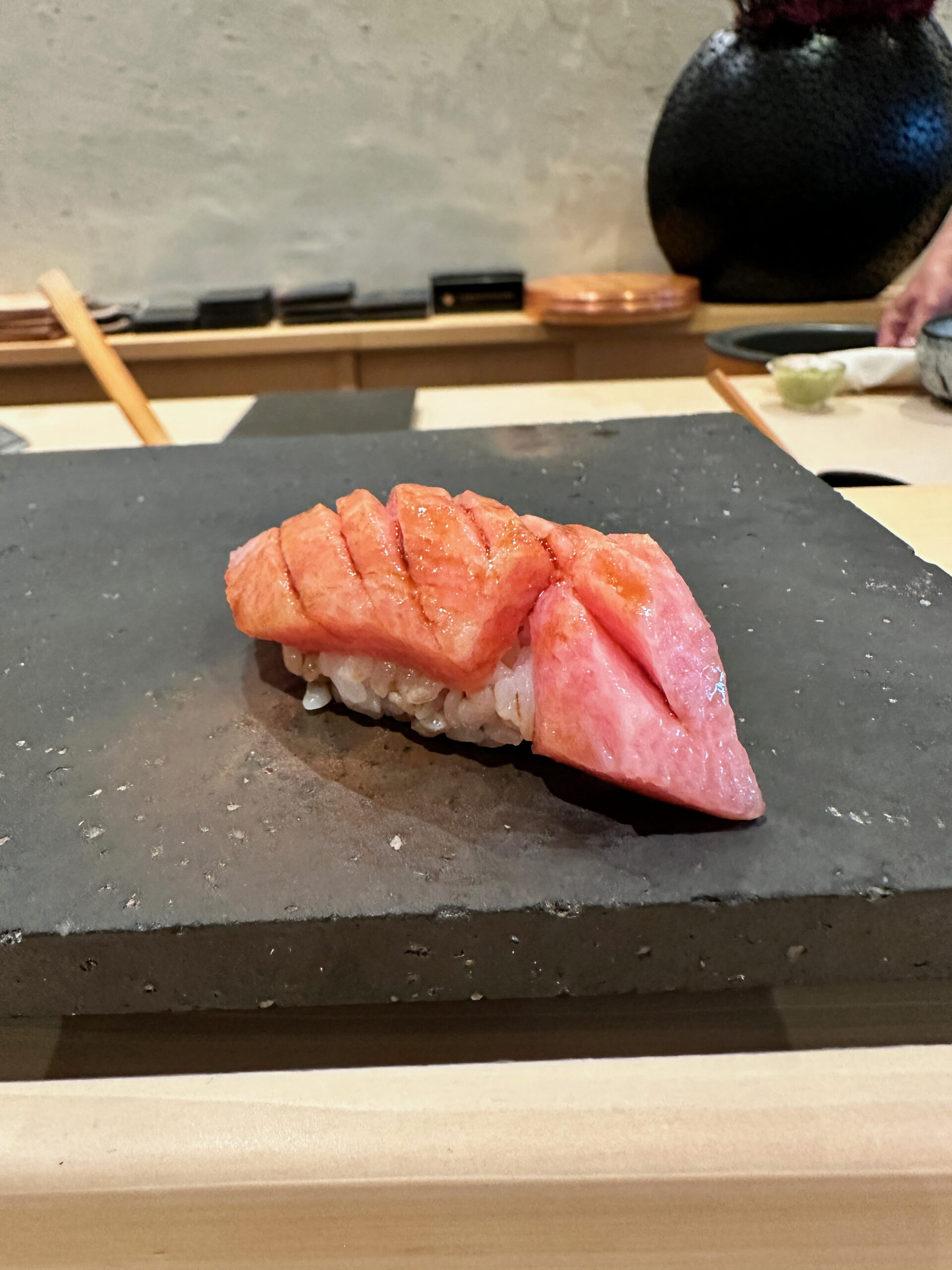
13: O Toro
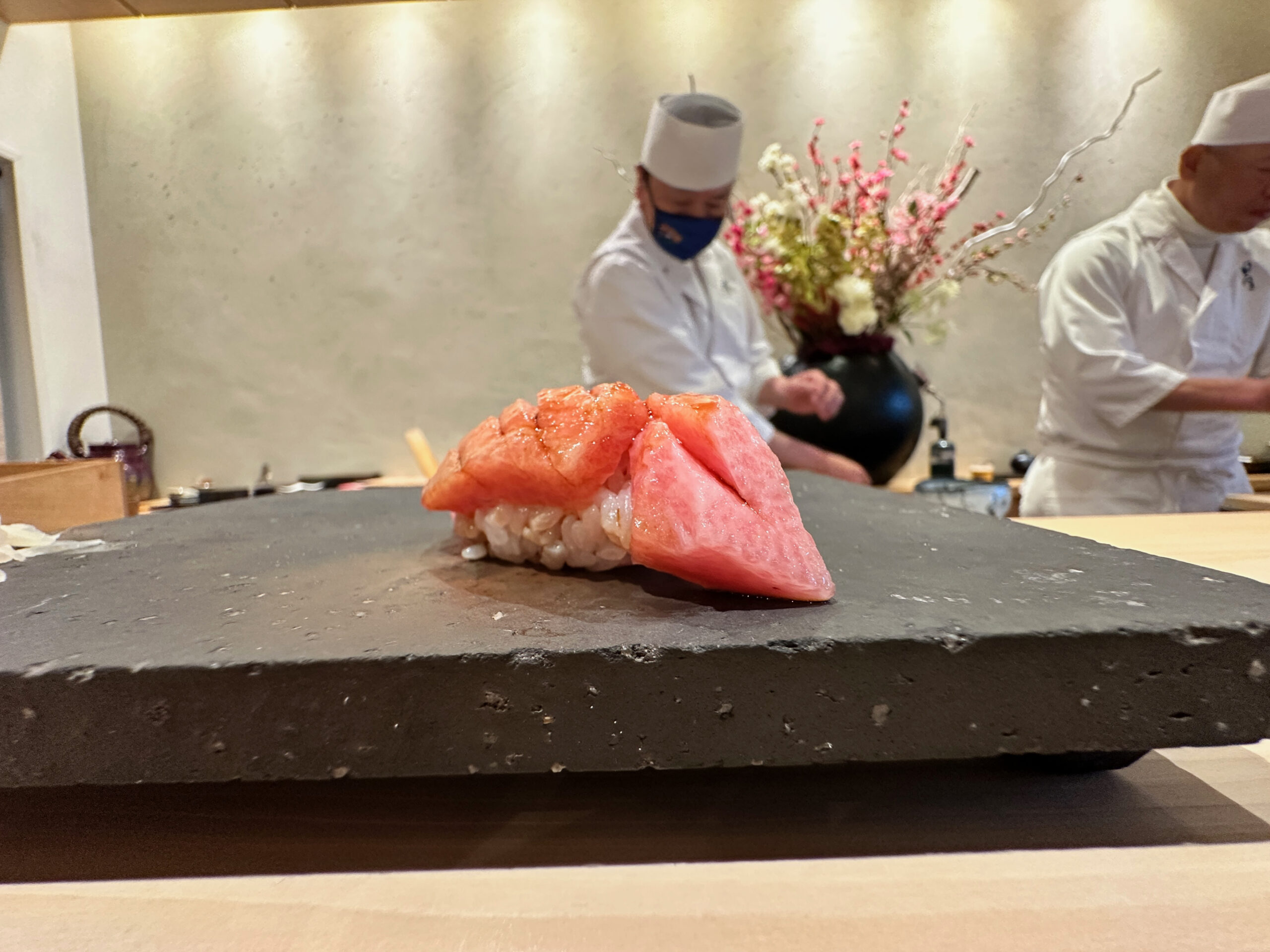
Another angle
Variety is the spice of life
At least according to this BeachBody Ab circuit I enjoy. It’s also part of the reason Kabuto is so far ahead of other sushiya I’ve come across in Vegas. For example, the Akamatsu below, and the many other neta available after the meal a la carte.

14: Akamutsu (Black throat sea perch)

15: Tamago
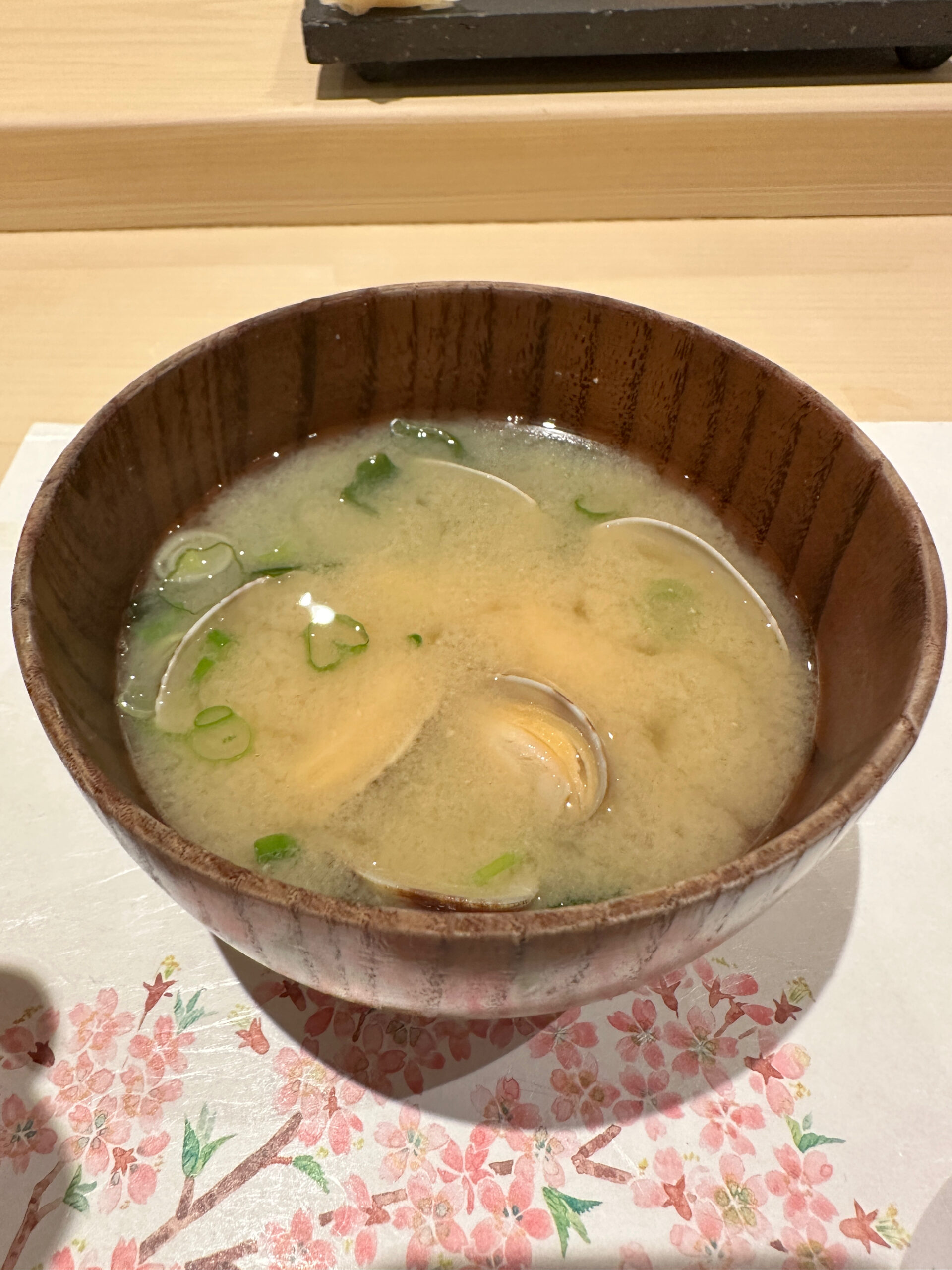
16: Miso soup (choice is given)
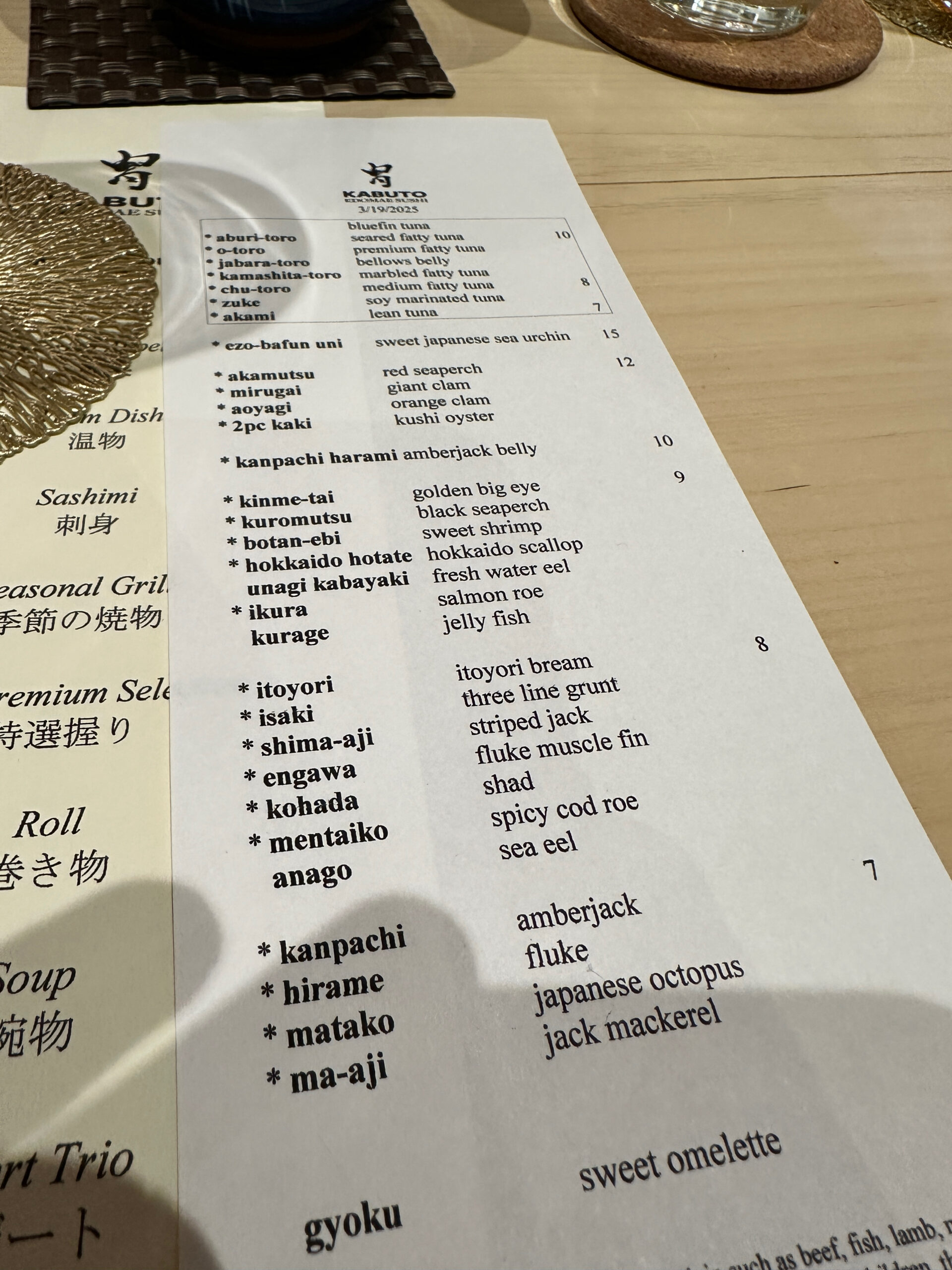
The menu
One of the best parts of Kabuto is what I didn’t even eat.
The Okonomi menu – seen above – is deep. If I go to Kabuto again – when I go to Kabuto again – I’d stick to the $125 and just go nuts on the extras. There are five different cuts of honmaguro, seven options altogether if you count the blowtorch (aburi) and marinated akami (zuke).
That I had such a fantastic experience at Kabuto, in spite of the average start, and in spite of getting tanked on white wine at 7:00am, says just how good Kabuto is.
Recommended.
